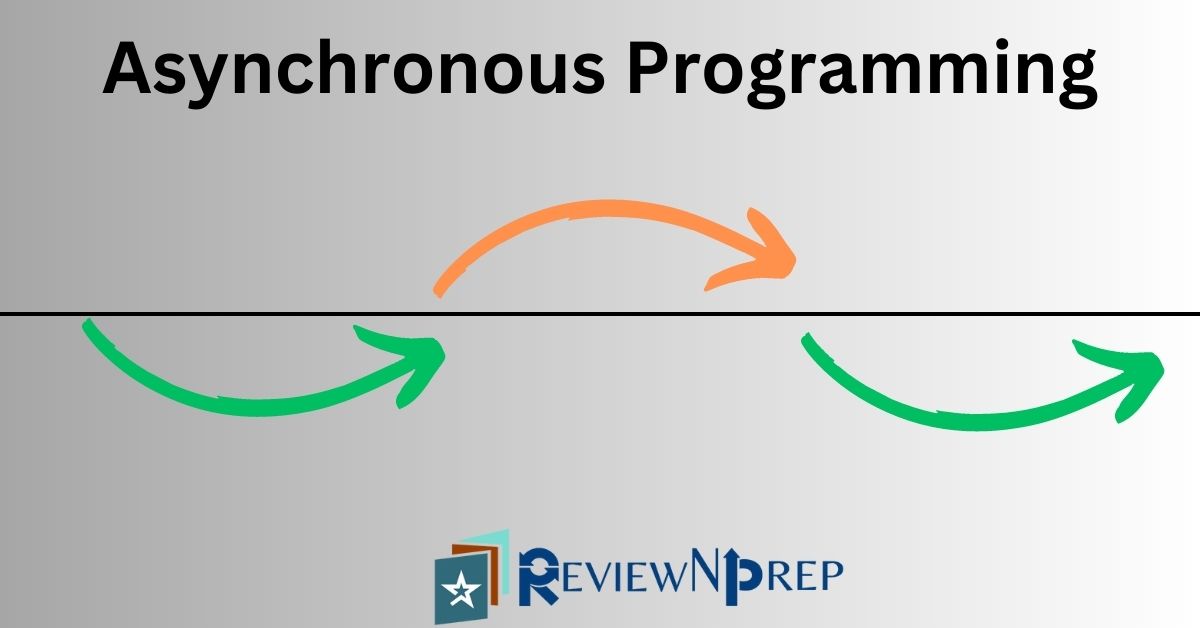|
|
In the realm of modern software development, responsiveness and scalability are of paramount importance. Asynchronous programming patterns play a vital role in achieving these objectives by enabling non-blocking execution of tasks.
In this blog, we’ll explore the fascinating world of asynchronous programming, its benefits, and some popular patterns with detailed examples to help you harness the full potential of this powerful paradigm.
Table of Contents
Understanding Asynchronous Programming
In traditional synchronous programming, tasks are executed sequentially, where one operation must complete before another starts. Asynchronous methods, on the other hand, empowers applications to perform multiple tasks simultaneously.
This non-blocking approach allows the program to initiate tasks and continue execution without waiting for the tasks to complete. It can be especially advantageous for applications that deal with I/O operations, network communications, or any process with potentially long execution times.
Related: Starting your dev career? Check out this blog to understand Python vs Java Full Stack Development.
Benefits of Asynchronous Programming
Improved Responsiveness: Asynchronous pattern enhances the responsiveness of applications, as tasks can be delegated and executed independently. This ensures that the main thread doesn’t get blocked by long-running tasks, leading to a more seamless user experience.
Enhanced Performance: By utilizing non-blocking patterns, applications can make better use of system resources and achieve higher throughput. This can be particularly beneficial for server-side applications handling multiple client requests concurrently.
Scalability: Asynchronous programming facilitates better scalability, as it can efficiently handle a large number of incoming requests or operations without getting overwhelmed.
Energy Efficiency: Asynchronous tasks can lead to reduced power consumption, especially in applications that spend significant time waiting for I/O operations to complete.
Asynchronous Programming Basics
Callbacks
The callback pattern is one of the fundamental approaches to asynchronous programming. In this pattern, a function is passed as an argument to another function, and it gets executed once the latter completes its task. Node.js, a popular JavaScript runtime, extensively uses callbacks for handling asynchronous operations.
Example – Node.js Callback:
function fetchData(callback) {
// Simulate an asynchronous operation
setTimeout(() => {
const data = { id: 1, name: 'John Doe' };
callback(data);
}, 1000);
}
// Usage
fetchData((result) => {
console.log(result);
});Promises
Promises are a more elegant and readable way of dealing with asynchronous code. They represent a value that might not be available yet but will be resolved in the future. Promises can be in one of three states: pending, fulfilled, or rejected. They allow chaining multiple asynchronous operations together and handling errors effectively.
Example – JavaScript Promises:
function fetchData() {
return new Promise((resolve, reject) => {
// Simulate an asynchronous operation
setTimeout(() => {
const data = { id: 1, name: 'Jane Smith' };
resolve(data);
}, 1000);
});
}
// Usage
fetchData()
.then((result) => {
console.log(result);
})
.catch((error) => {
console.error(error);
});Async/Await
Async/await is a modern and more intuitive way to work with asynchronous code. It allows developers to write asynchronous operations as if they were synchronous, making the code easier to read and understand.
Example – Async/Await in Python:
import asyncio
async def fetchData():
# Simulate an asynchronous operation
await asyncio.sleep(1)
return {'id': 1, 'name': 'Alex Johnson'}
# Usage
async def main():
result = await fetchData()
print(result)
asyncio.run(main())Practical Use Cases of Asynchronous Programming Patterns
Asynchronous programming patterns can significantly benefit retail and ecommerce applications, where responsiveness, scalability, and efficient handling of various tasks are crucial.
Here are some practical use cases of how asynchronous programming can be applied in this domain:
1. Product Catalog Updates
In a retail or ecommerce application, the product catalog may need to be frequently updated with new products, prices, or availability status. Asynchronous programming can be employed to fetch data from various sources, such as suppliers or inventory systems, and update the product catalog in the background without blocking the main thread.
This ensures that the catalog remains up-to-date, and customers can access the latest information without experiencing delays or timeouts.
2. Inventory Management
Managing inventory in real-time can be a challenging task, especially during peak shopping seasons. Asynchronous programming allows retailers to efficiently handle multiple inventory-related operations, such as checking stock levels, reserving products for customers, and updating inventory quantities after purchases.
With non-blocking code, inventory management processes can occur concurrently, providing accurate and timely information to both customers and backend systems.
3. Order Processing
When a customer places an order, various processes need to be initiated, such as order validation, payment processing, and shipping coordination. Asynchronous programming enables retailers to handle these tasks concurrently, reducing the time taken to complete the order lifecycle.
For instance, while payment processing is in progress, the system can start preparing the shipment, enhancing overall order fulfillment efficiency.
4. Price and Promotion Updates
Retailers often run promotional campaigns and dynamically adjust prices for certain products. Asynchronous programming allows for the timely and efficient updating of prices and promotions across the platform.
By employing non-blocking patterns, retailers can ensure that price changes are propagated throughout the system without causing delays in the user interface or website responsiveness.
5. Customer Notifications
Ecommerce platforms frequently send notifications to customers, such as order confirmations, shipment tracking updates, or personalized marketing emails. Asynchronous programming can be used to handle email dispatching or notification services concurrently.
This ensures that customers receive timely notifications without the need to wait for the email or message to be sent, enhancing the overall user experience.
6. Search and Filtering
In ecommerce applications with vast product catalogs, implementing efficient search and filtering functionalities is crucial. Asynchronous programming can be utilized to process search queries and filtering options in parallel.
This allows the application to handle multiple user requests simultaneously, making the search experience smoother and faster.
7. Customer Reviews and Ratings
Collecting and displaying customer reviews and ratings can be time-consuming, especially for popular products with numerous reviews. Asynchronous programming enables retailers to fetch and process reviews from the database or external sources concurrently.
This results in faster loading times for product pages, enhancing customer engagement and decision-making.
Conclusion
Asynchronous programming patterns provide a powerful toolset for building responsive, scalable, and efficient applications. By leveraging callbacks, promises, or async/await, developers can handle time-consuming tasks gracefully without compromising the application’s performance.
Understanding these patterns and their appropriate usage will enable you to master the art of asynchronous programming and elevate your software development skills to new heights. So, embrace the non-blocking world and unlock the true potential of your applications!
Further Reading:
Check out this blog on how to become a Full Stack Developer.
Check out this blog to increase your productivity as a developer and stay at the top of your game.

